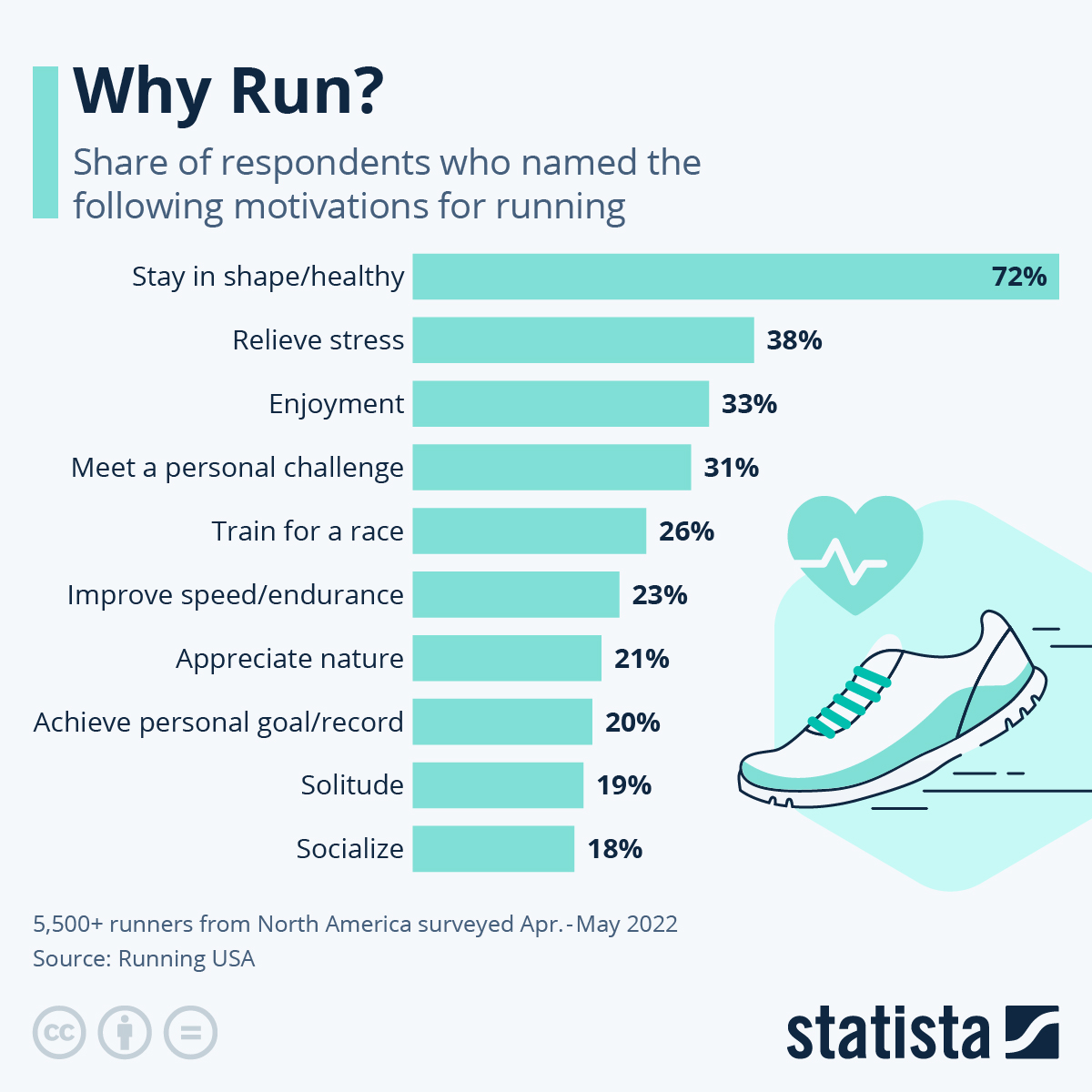
“It’s the perfect sport for a pandemic,” The New York Times wrote in 2021, explaining the surge in popularity of running in the face of Covid-19 restrictions.
“All you need is a pair of shoes and a six-foot buffer from the next person,” the author Talya Minsberg described what she called a “back-to-basics exercise boom”.
With gym closures and restrictions on indoor activities and team sports, people turned to outdoor exercise as a safe and accessible way to stay active and maintain their physical and mental well-being.
Running offered a sense of freedom, a chance to escape the confines of home, and an opportunity to connect with nature amidst lockdowns and social distancing measures.
And while Covid-19 restrictions have long been lifted, many pandemic runners have kept at it, thanks to the addictive nature of a sport often belittled as boring and repetitive. According to a 2023 survey of roughly 4,000 active runners conducted by RunRepeat, almost 30 percent of the respondents started running during the pandemic.
So what is it that motivates runners to tie their laces several times a week? Beyond the immediate health benefits, the motivation to run often stems from a desire for personal challenge, stress relief and the pursuit of fitness goals. As Statista's Felix Richter shows in the chart below, based on survey data from Running USA, shows, staying in shape and healthy is by far the most-cited reason to run in the post-pandemic world, followed at quite some distance by stress relief and simply enjoyment.
You will find more infographics at Statista
Whether it's training for a race, improving cardiovascular health or simply enjoying the hypnotic rhythm of footfalls on pavement, running has become a cornerstone of many people's daily routines, fostering a global community united by a shared passion for movement, fresh air and athletic achievement.
“It’s the perfect sport for a pandemic,” The New York Times wrote in 2021, explaining the surge in popularity of running in the face of Covid-19 restrictions.
“All you need is a pair of shoes and a six-foot buffer from the next person,” the author Talya Minsberg described what she called a “back-to-basics exercise boom”.
With gym closures and restrictions on indoor activities and team sports, people turned to outdoor exercise as a safe and accessible way to stay active and maintain their physical and mental well-being.
Running offered a sense of freedom, a chance to escape the confines of home, and an opportunity to connect with nature amidst lockdowns and social distancing measures.
And while Covid-19 restrictions have long been lifted, many pandemic runners have kept at it, thanks to the addictive nature of a sport often belittled as boring and repetitive. According to a 2023 survey of roughly 4,000 active runners conducted by RunRepeat, almost 30 percent of the respondents started running during the pandemic.
So what is it that motivates runners to tie their laces several times a week? Beyond the immediate health benefits, the motivation to run often stems from a desire for personal challenge, stress relief and the pursuit of fitness goals. As Statista’s Felix Richter shows in the chart below, based on survey data from Running USA, shows, staying in shape and healthy is by far the most-cited reason to run in the post-pandemic world, followed at quite some distance by stress relief and simply enjoyment.
You will find more infographics at Statista
Whether it’s training for a race, improving cardiovascular health or simply enjoying the hypnotic rhythm of footfalls on pavement, running has become a cornerstone of many people’s daily routines, fostering a global community united by a shared passion for movement, fresh air and athletic achievement.
Loading…






